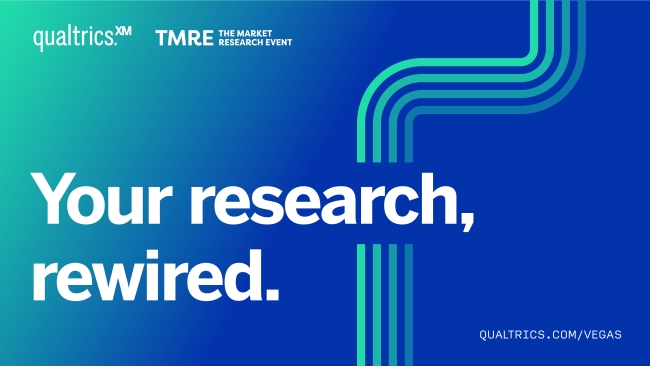What is synthetic data validation?
Synthetic data validation is the process of systematically assessing whether artificially generated data is realistic, representative, and fit for its intended use. It's what legitimizes synthetic data — ensuring it can be confidently considered realistic data, not inaccurate data.
The validation process tests for accuracy, consistency, realism, and utility to confirm that the data is genuinely useful for the task at hand. It avoids the risks that can come with synthetic data that hasn't been stress tested.
For example, synthetic data is increasingly being used to simulate early-stage consumer responses to new product concepts or marketing ideas. Without validation, these simulations could misrepresent customer sentiment — potentially leading to wasted time, money, energy, and reputation.
Similarly, when businesses generate synthetic datasets to model new or hard-to-reach audience segments — such as emerging markets or underrepresented demographics — validation ensures the data reflects these groups accurately and ethically, rather than reinforcing stereotypes or assumptions.
According to a Qualtrics® XM Institute global study of IT executives, one of the top challenges facing technology leaders is ensuring that AI and data-driven decisions are explainable, accurate, and aligned with business goals. That's exactly what synthetic data validation is designed to enable.
It's not just a quality check — it's a critical safeguard for data used in high-stakes decisions. Now, in an environment where synthetic responses increasingly inform product decisions, AI models, and market forecasts, the role of validation when creating synthetic data is mission critical.
Webinar: Learn how Booking.com brought new insights to life with synthetic data
What is synthetic data and why is it gaining importance for businesses?
Now, let's take a step back and talk about synthetic data.
Synthetic data is artificially generated information that replicates the patterns, relationships, and statistical properties of real-world data. Built using advanced Artificial Intelligence (AI) and Machine Learning (ML) models and trained on large, diverse datasets, synthetic data is designed to be both realistic and privacy safe.
By creating entirely new and valuable observations that reflect the behaviors or characteristics of your target audience, synthetic data is fast becoming a go-to asset for researchers, analysts, and strategy leaders. Here's why:
Faster insights, without fieldwork
Where traditional research timelines can stretch for weeks, artificial data can generate realistic, human-like responses in minutes — offering a way to create fair synthetic datasets quickly and cost-effectively.
This is enabling businesses to test hypotheses, screen ideas or explore new segments at speed — unlocking a clear advantage in fast-moving markets.
Privacy-first by design
Leveraging high-quality synthetic data dramatically reduces the risk of data breaches or data protection headaches — because, when done well, there's no trace of any one person's data in it.
This makes it a powerful tool for privacy-conscious teams and use cases.
Reach hard-to-access audiences
Some customer segments are expensive, time-consuming or simply impractical to survey. An artificially generated dataset addresses the selection bias challenge by simulating hard-to-access groups with precision.
De-risk early-stage decisions
Synthetic data enables safe experimentation before launching new products, campaigns or services.
By first simulating how consumers could respond — without risking an early access leak from actual consumers — businesses can identify what resonates and what doesn't early in the process, reducing the risk of costly missteps.
Power AI and predictive models
AI models live and die on the quality of the data that trains them. Synthetic datasets offer an ideal solution for training data when real-world examples are limited or sensitive.
Scalable, flexible, and reflective of reality — without compromising privacy or getting stuck in data acquisition bottlenecks — synthetic data is ideal for advancing Machine Learning, forecasting, and scenario simulation.
Synthetic data validation methods and why they matter
Validating synthetic data isn't a single test or score — it's a multidimensional process that confirms the data is accurate, useful, and ethically sound.
To achieve that, researchers use a variety of validation methods and metrics — each one designed to test a different aspect of data quality. These methods don't just improve the technical output. Together, they provide a comprehensive view of synthetic data quality — reducing risk, building trust, and ensuring that synthetic data delivers business value.

Statistical comparisons
Statistical comparisons ask a fundamental question: does this data behave like real data?
These tests look to answer that question by comparing the shape and structure of the synthetic dataset to the original data source, confirming how well it can mimic real-world data. They look at how well the synthetic responses replicate distributions, relationships between variables, and overall patterns in the data.
Common techniques include the Kolmogorov—Smirnov test, correlation matrix analysis, and divergence measures such as Jensen-Shannon or Kullback—Leibler distance.
Model-based testing (utility testing)
Statistical similarity is necessary, but not always sufficient. The next step is to test whether the synthetic data actually works in practice. That's why model-based — or utility — testing is introduced, asking the question: can this data be used for what we need it to do?
This typically involves training a model on the synthetic data and testing its performance on real-world data — a process often referred to as "Train on Synthetic, Test on Real" (TSTR). If a model trained on synthetic data performs similarly to one trained on real data, that's a strong signal of utility.
Model-based testing also allows researchers to test Machine Learning models using synthetic data before applying them to real datasets.
Expert review
While quantitative metrics are vital, they don't always capture everything that matters. That's where expert review comes in. This method asks: does the data make sense in the real world?
Here, subject matter experts look for patterns or outliers in synthetic datasets that may technically pass statistical tests but defy logic or domain knowledge. This qualitative check is particularly valuable in fields like healthcare, finance, or public policy, where context and nuance matter.
Bias and privacy audits
Synthetic data is often used to improve privacy and fairness, but it can do the opposite if not carefully audited. That's why bias and privacy assessments ask: is the data safe, fair and compliant?
Privacy audits look for signs of memorization or re-identification risk with the original real data — like duplicate rows or patterns that could trace back to individuals and reveal sensitive data.
Bias audits, meanwhile, evaluate whether synthetic data disproportionately represents (or underrepresents) certain groups, or whether it could lead to unfair outcomes — especially when using AI-generated synthetic data.
Bias and privacy audits are critical for ethical AI and responsible research. They help organizations avoid discrimination, meet regulatory standards (like GDPR or the EU AI Act), and maintain the trust of customers and stakeholders — especially when synthetic data is used in hiring, lending, healthcare, or other sensitive applications.
Understanding the validation trinity
When working across validation methods, it's crucial to understand the three key dimensions at the heart of all synthetic data validation: fidelity, utility, and privacy. Often called the validation trinity, these pillars represent the core qualities every synthetic dataset must balance.
It's equally important to understand that these dimensions, while interdependent, are often in tension. And maximizing one can impact another. For example, boosting fidelity too far may compromise privacy, and strong privacy protections might slightly reduce utility.
The goal isn't perfection across all three, but balance. That balance should reflect the specific risk tolerance, compliance requirements, and strategic objectives of each use case.
Free eBook: 4 synthetic data use cases for research
Synthetic data validation best practices
Effective validation doesn't just protect against poor-quality data — it empowers better decisions, stronger models, and greater confidence in synthetic data as a strategic tool.
But to unlock that value, validation needs to be robust, repeatable, and embedded across the data lifecycle.
These best practices ensure that synthetic data doesn't just accelerate research — it enhances it, too.
Set clear goals from the start
Validation is only meaningful if you know what success looks like. Start by defining what the synthetic data is meant to achieve — whether it needs to replace real-world data for modelling or augment sample data.
From there, establish benchmarks. What level of statistical similarity to real data is acceptable? How much performance drop-off (if any) is tolerable? What privacy thresholds must be met?
These targets help focus validation efforts and guide decisions when trade-offs arise.
Keep humans in the loop
Automated metrics are powerful, but they can't catch everything.
Whether it's spotting anomalies, illogical outputs or ethical red flags that may pass statistical tests but fail common sense, people remain a key part of the process. Crucially, embed people who understand the data's intended use, the risks involved, and what "plausible" really looks like.
Human oversight is especially valuable in sensitive domains where nuance matters.
Document everything
Validation isn't just about complete checks — it's also about showing how you got there. Clear documentation of how the data was generated, what was tested and why it passed is all fundamental to building confidence and trust in synthetic data. This should also encompass the Machine Learning algorithms and statistical models used.
Documentation also makes validation auditable — an increasingly important factor as synthetic data use grows in regulated environments.
Make validation continuous
Validation is neither a one-off nor final step — it's an ongoing process.
That means monitoring data quality as you train and retrain models, revalidating when you apply data to new tasks, and feeding validation results back into your generation process to improve future outputs.
This looped approach is key to catching issues early and keeping synthetic data reliable over time.
Synthetic data governance, ethics and regulation
As synthetic data generation becomes more deeply embedded in strategic research, data science, and AI development, validation isn't just a technical discipline — it's a governance and ethical imperative.
To be considered robust, any validation approach must include clear frameworks, strong ethical foundations, and compliance with evolving regulations.
Governance: Setting the rules
Synthetic data governance is about ensuring quality, oversight, and accountability throughout the data lifecycle. It ensures that your synthetic data remains compliant with data privacy regulations — especially when built from data collected from human subjects.
Good governance starts with clear roles and responsibilities: who owns the synthetic data pipeline? Who is accountable for its validation? And who decides when it's fit for use?
Strong governance frameworks define standards for data quality, validation thresholds, risk tolerance and documentation. They also include mechanisms for ongoing monitoring and auditing — especially as models evolve or are reused in new contexts.
Without this structure, synthetic data quality can drift, validation processes may be inconsistent, and decision-making risks become harder to detect and correct.
Ethics: Fairness, transparency and accountability
The use of synthetic data introduces unique ethical responsibilities.
The data may be artificially generated, but it can still harm people. That's why fairness, transparency, and accountability must be embedded directly into the validation process.
Fairness involves auditing for bias, ensuring inclusive representation, and avoiding reinforcement of societal inequities.
Transparency requires clear documentation of how the data was generated and validated, what assumptions were made, and what risks were considered.
Accountability means being able to answer for how synthetic data is used — and misused — including building human-in-the-loop mechanisms and clear escalation pathways.
Validation plays a crucial role in enforcing these principles. It helps identify when synthetic data might be introducing harm, making unrealistic assumptions, or producing outcomes that could mislead stakeholders or systems.
Regulation: Rising compliance expectations
As AI adoption grows, so too does regulatory scrutiny — particularly in high-risk domains like healthcare, finance and public services.
New legislation, such as the EU AI Act, explicitly references the use of synthetic data and outlines requirements for transparency, data quality, and risk mitigation.
Similarly, existing regulations like GDPR still apply when real-world data is used to train generative models, even if the final outputs are synthetic. This means validation must include formal checks to demonstrate that privacy is preserved and individuals cannot be re-identified through synthetic outputs.
As regulatory frameworks mature, organizations will need to treat synthetic data validation reports not just as internal quality controls, but as auditable documentation.
Leverage the power of synthetic data with Qualtrics Edge
Synthetic data is transforming how organizations uncover insights, move fast, and make smarter decisions. But the power of synthetic data lies in its quality — which means validation isn't optional, it's essential.
For over two decades, Qualtrics has been the trusted validation authority for research data. Leading academic institutions, Fortune 500 companies, and government agencies rely on our rigorous methodology standards to ensure their insights drive confident decisions. From fraud detection and statistical significance testing to advanced AI-powered quality assurance, we've validated billions of human responses using the most stringent research standards available.
Now, with Qualtrics Edge, we're applying this same methodological expertise to synthetic data. You get more than just synthetic responses — you get a platform built on proven validation frameworks, expert oversight, and decades of research methodology leadership.
Every synthetic audience is trained and validated using millions of real survey responses from the same platform trusted by researchers worldwide. Every output undergoes the rigorous testing protocols developed through years of academic research partnerships. And every insight is built for action — ready to help you stay ahead in a fast-moving world with the confidence that comes from methodology you can trust.
Free eBook: The rise of synthetic responses in market research



